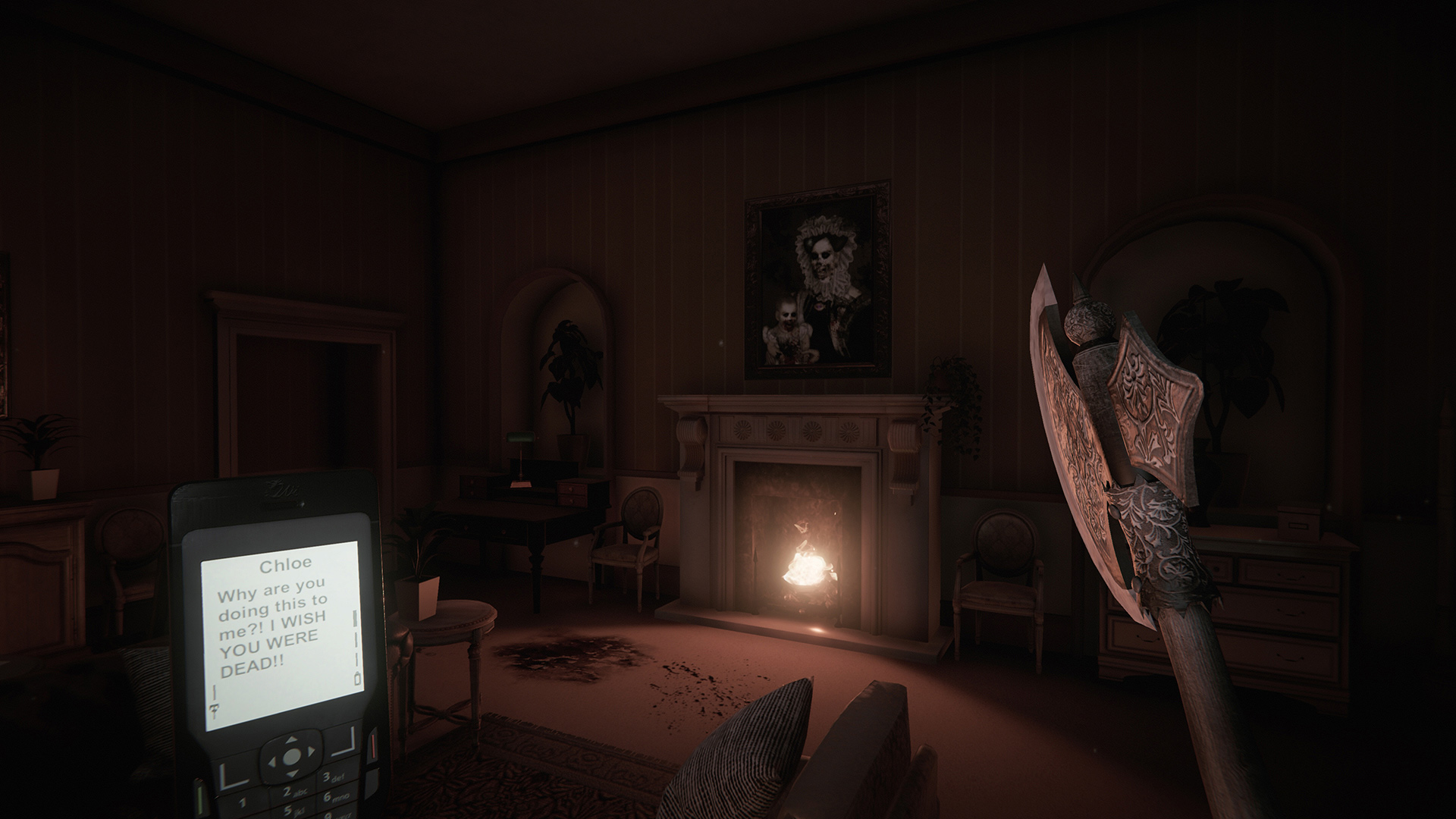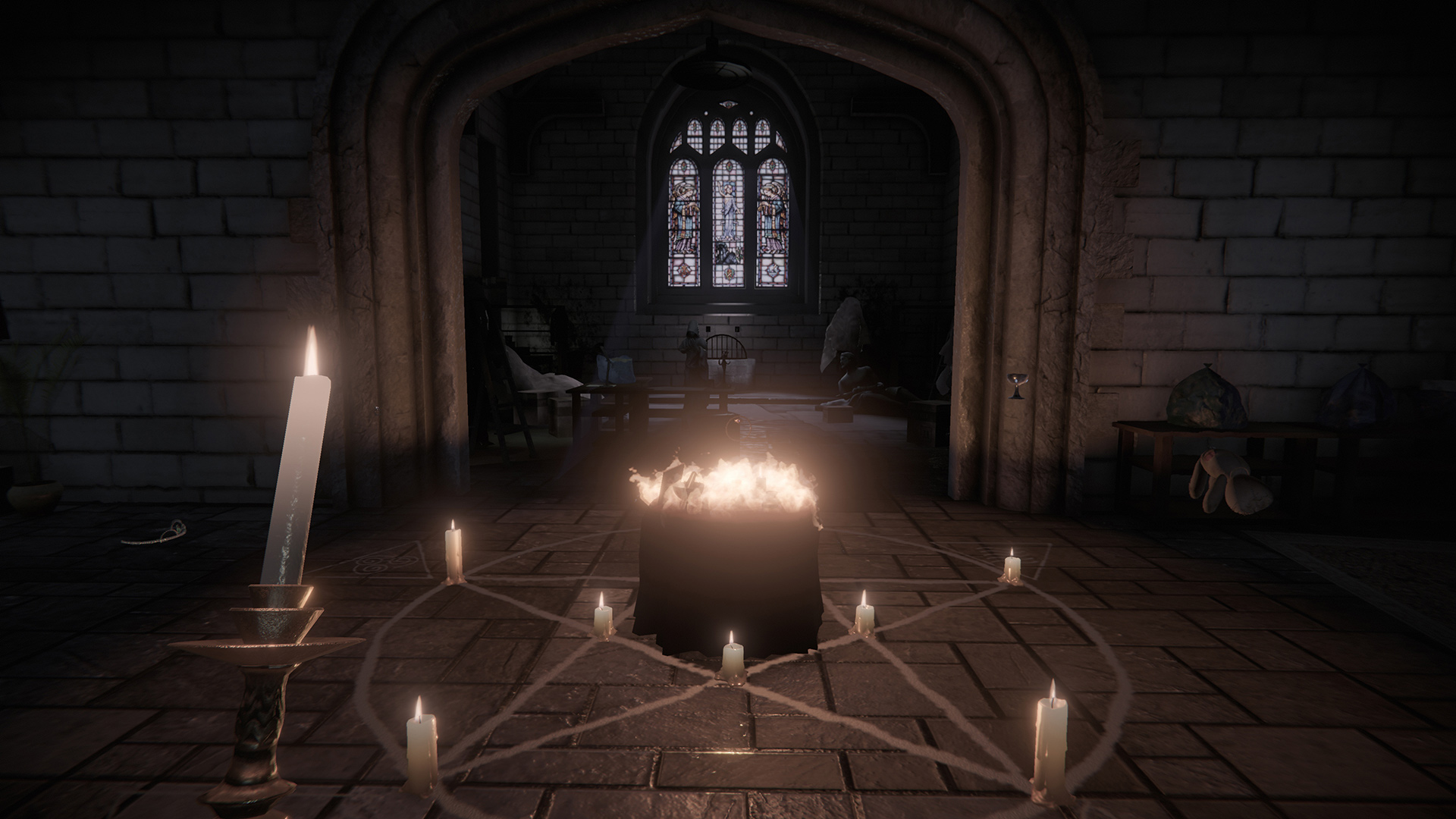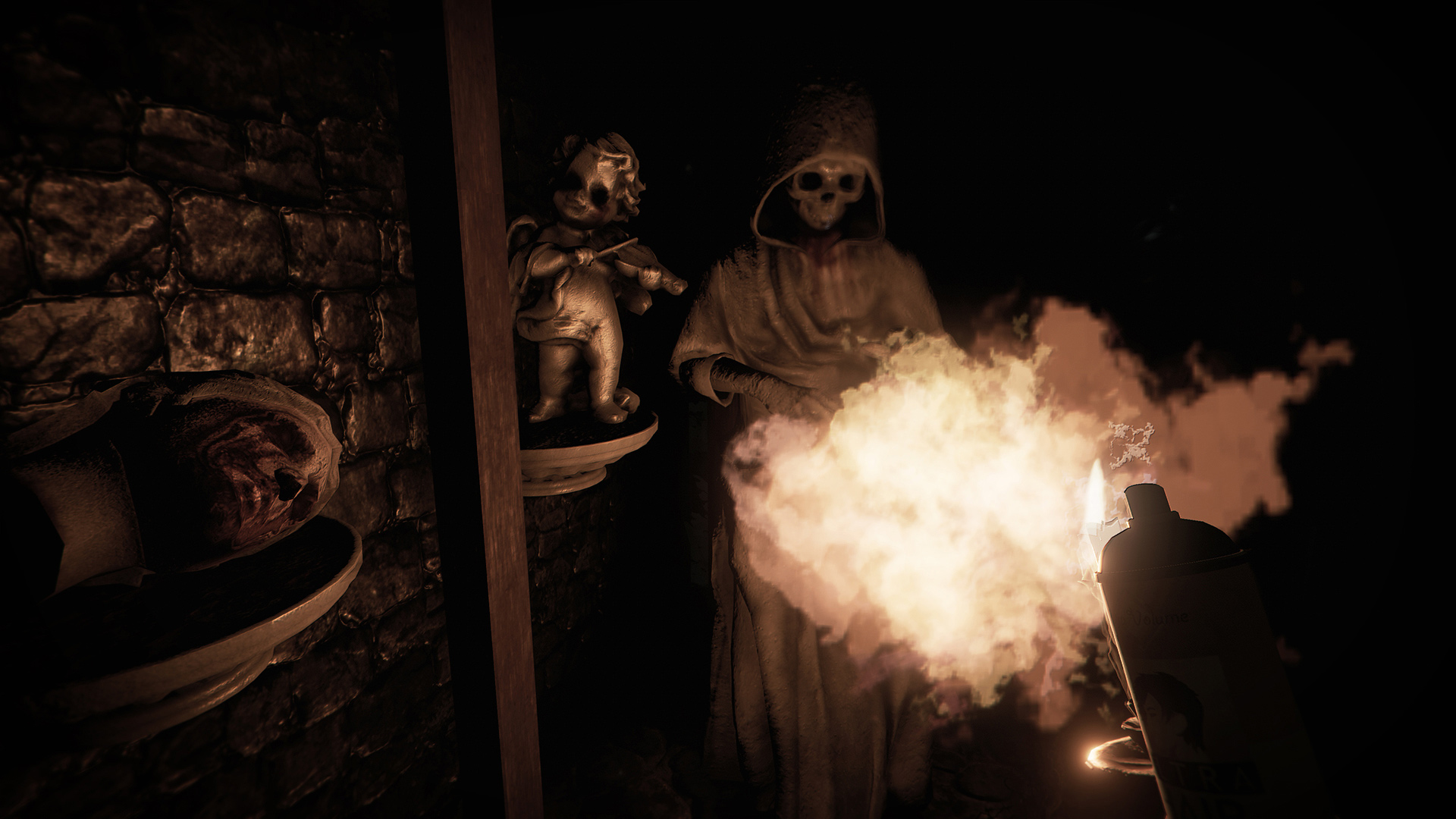
In September of last year, Seymour films, in cooperation with Red & Black films, has released Don’t Knock Twice. A supernatural horror film based on s Slavic tale of Baba Yaga – an old, deformed crone, who you may know from works such as CD Projekt RED’s The Witcher 3: Wild Hunt, and The Grimm Brothers’ Hansel and Gretel. The main premise of the film is centered around the above-mentioned tale of Baba Yaga, but with a spin.
In most tales, Baba Yaga is a living being, who is residing in an old decrepit hut in a middle of a dark forest. However, in Don’t Knock Twice, she is a multidimensional demon who marks, and subsequently devours all who fall under her curse, which dates back hundreds of years. In addition, she doesn’t work alone, as throughout the story, a Baphomet like figure can be seen aiding her evil ways. The story itself features a wide array of satanic and demonic symbolism, which is there to emphasise the nature of the crone.
The film itself tells a rather simplistic tale, but where it ends, another story begins. But it doesn’t take place on a silver screen, but in the comfort of your own home, as the story of Don’t Knock Twice continues within the confines of the recently released videogame movie tie-in. And one which is not just limited to your TV, as Don’t Knock Twice is a VR enabled title, both on PC and PlayStation 4.
Don’t Knock Twice has been developed by Wales Interactive, who in the past has experimented with various uses of the medium. With titles such as Late Shift, and The Bunker, the developer has experimented with FMV. But both the titles in question were rather underwhelming, just like the rest of studio’s portfolio. However, by abandoning the average TV in favour of a VR headset, Wales Interactive is looking to finally score its first big hit, with Don’t Knock Twice.
Don’t Knock Twice, is a first-person walking-simulator/horror, which has you explore a mansion in search of truth, and against the will of the Baba Yaga herself. Some may find the description of a ‘walking-simulator’ to be an affront to Don’t Knock Twice, as it is a horror-centric title first and foremost, but in reality, it shares more elements with The Vanishing of Ethan Carter, than with Resident Evil 7.

The core gameplay of Don’t Knock Twice boils down to traversing the mansion, while picking up notes, and solving puzzles. The initial stages feature menial tasks such as lighting a candle or opening a door. But with time, the difficulty increases, and the real trial of Baba Yaga (Trial of Five Elements) begins. The trail of five elements forms the backbone of Don’t Knock Twice’s plot, and in many ways, it is the most important part of the title. Yes – the core story of the game is based on the last year’s film, but all the important details can only be found within optional collectibles. And ultimately the tale of film’s protagonist, Chloe, is nothing more than miscellaneous background noise. And that is a shame.
Fans of the film, or the genre as a whole, will surely find the way in which the plot of the title has been treated by Wales Interactive, to be rather disappointing. As in the end, all the back story, character development, and scene-buidling feels futile, and unimportant. And in turn, it makes one feel like he/she is playing Don’t Knock Twice for no particular reason at all, other than to simply waste some time. However, one will only come to such conclusion once he/she enters the ‘open’ portion of the title. As it is then when title is at its worse horror-wise, as it lacks general direction, and feels like an empty emotionless playground.
Once the player discovers the site of the ritual, which serves as the board for the trial of five elements, he/she will simultaneously enter the second stage of the title – a stage which will require one to independently scour the mansion for the said elements. And at this exact point, Don’t Knock Twice, loses all the remnants of its horror. As by leaving the heavily scripted corridors, one also leaves all the events which happened within them, and enters something which resembles a Gothic version of Gone Home.
Within the early stages, player will be faced with a wide array of jump scares, and other scare tactics. As within the tight and claustrophobic corridors, Don’t Knock Twice is at its best. It utilises the limited space in order to build tension, and in turn, horror. And after the first couple of encounters, one is carefuly placing every single step, on-by-one, in order to make sure that he/she will not fall for any other tricks, which Don’t Knock Twice may be holding in its sleeve. However, once one begins to develop a sense of dread for what’s to come, he/she is pulled straight out of cramped corridors and dropped into large open rooms full of brightly lit areas.
The way in which Don’t Knock Twice removes a vast majority of its horror in an instant, is abrupt and a little too sudden. However, by removing the horror, it also manages to present one with a playground which is not just architecturally coherent, but also one which is immensely fun to explore. Because unlike houses which can be found within the previously mentioned Gone Home, or the recently released What Remains of Edith Finch, the mansion of Don’t Knock Twice, makes sense from logical, and gameplay standpoints.

The biggest problem of all ‘artistic’ walking-simulators is the fact that they are all incredibly incoherent. And for some unknown reason, they are all full of rectangular vents which are used instead of doors. However, Don’t Knock Twice doesn’t suffer from the same issues, as despite its supernatural premise, it is situated within a realm of logic, and because of that, the layout of the building is incredibly easy to remember.
In addition to its layout, the mansion of Don’t Knock Twice also refers to a plethora of different puzzles, and triggers in order to make the traversal entertaining. For example, in order to unlock a shortcut between two segments of the mansion, one has to burn through old vines with a makeshift flamethrower, made out of a can of hairspray and a candle. And while doing so, he/she completely disregards the fact that this activity is only there to create a shortcut between two locations.
Mechanics such as the one above, are everywhere within Don’t Knock Twice, and seemingly every single location within the mansion features a unique mechanic which adds variety to the gameplay, and ensures that one is not bored with the exploration itself. And strangely enough, Don’t Knock Twice is a title, which despite concentrating on horror, nails everything but the source material on which it is based upon.
Ultimately, Don’t Knock Twice is a game of two tales. One is a tale of horror, which after initial hadful of segments, dissipates into thin air, leaving one yearning for more. Whereas the other is a tale of an accomplished walking simulator. As eerily enough, Don’t Knock Twice has managed to improve upon the flaws, and mistakes which are common within this particular genre. And in combination, both these factors create a title which is a success, but not in the way in which Wales Interactive would want it to be.
If Don’t Knock Twice was an unlicensed walking-simulator centered on exploration of an old mansion, inhabited by a satanic cult – then it would be a tremendous success. But unfortunately, Don’t Knock Twice is a horror-centric title, which is built upon a pre-existing intellectual property. And while desperately trying to fall in line, and conform to the guidelines set by the film of the same name, it fails to deliver, as it is simply devoid of any horror and tension. And ultimately fails as a movie tie-in, as it is unable to capture the essence of its source material.
DISCLAIMER: Don’t Knock Twice was initially set to launch on both PlayStation VR and PC with a particular mobility feature, which was set to ease the exploration of the title. However, the improved walking locomotion, which allows the player to move in particular direction, while turning his/her head, will only be available for the PC version of the title at launch. And all PlayStation VR users will have to wait for it a little longer – but if and when it finally arrives on PlayStation VR, it won’t feature in its complete form, as strafing will not be possible on Sony’s console.
REVIEW CODE: A complimentary Sony Playstation 4 code was provided to Bonus Stage for this review. Please send all review code enquiries to press@4gn.co.uk.
Subscribe to our mailing list
Get the latest game reviews, news, features, and more straight to your inbox
Thank you for subscribing to Bonus Stage.
Something went wrong.
-
Gameplay - /10
0/10
-
Graphics - /10
0/10
-
Sound - /10
0/10
-
Replay Value - /10
0/10






